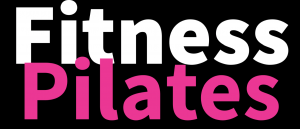
The Fitness Pilates Blog
How to plan your pilates classes for 2024
How to plan your pilates classes for 2024
NOW IS THE TIME to be Planning your Pilates classes for 2024 … this requires thoughtful consideration of a variety of factors, including your target audience, your expertise, current fitness trends, and the goals of your clients. Here’s a step-by-step guide to help you plan your Pilates classes for the upcoming year:
- Identify Your Target Audience:
- Determine the demographics, fitness levels, and specific needs of your ideal Pilates clients. Are you focusing on beginners, intermediates, advanced practitioners, or a specific population like seniors, pregnant women, or athletes?
- Set Clear Goals:
- Define the objectives you want to achieve with your Pilates classes. These goals can relate to core strength, flexibility, injury rehabilitation, posture improvement, stress relief, or any specific focus areas.
- Stay Updated on Pilates Trends:
- Stay current with Pilates trends and developments in the fitness industry. This can help you incorporate new ideas and concepts into your classes, keeping them fresh and engaging.
- Review Your Expertise:
- Consider your qualifications and expertise. Plan classes that align with your strengths and experience. If you want to offer something new, consider taking specialized training or certifications in Pilates disciplines like mat Pilates, reformer Pilates, or pre- and postnatal Pilates.
- Select Class Formats:
- Choose Pilates class formats that match your target audience and goals. Options include mat Pilates, equipment-based Pilates, barre-based Pilates, or fusion classes that combine Pilates with other fitness modalities.
- Monthly Themes or Focus Areas:
- Plan to have different themes or focus areas for your Pilates classes each month. This can keep your clients motivated and engaged while addressing various aspects of their fitness and wellness.
- Class Duration and Frequency:
- Determine the duration and frequency of your Pilates classes. Decide if you’ll offer 30-minute express sessions, 45-minute classes, or traditional one-hour sessions. Also, define how many times a week you’ll hold classes.
- Create Class Schedules:
- Plan your Pilates class schedule for the entire year. Include specific dates, times, and locations for each class. This helps with organization and makes it easier for clients to plan their participation.
- Periodization:
- Consider incorporating periodization into your class plans. This involves varying the intensity and focus of your classes over time to prevent plateaus and continually challenge participants.
- Diverse Workouts:
- Offer a variety of Pilates workouts throughout the year, including core strengthening, flexibility and mobility sessions, resistance-based classes, and relaxation and mindfulness sessions.
- Special Events and Workshops:
- Plan special events, workshops, or challenges to keep clients engaged and motivated. These can include posture workshops, Pilates retreats, or themed classes for holidays and seasons.
- Progressive Programming:
- Ensure that your class plans progressively challenge participants. Start with foundational movements and gradually introduce more advanced exercises as the year progresses.
- Promotion and Marketing:
- Develop a marketing plan for your Pilates classes, including promotional strategies, social media content, and advertising. Consider offering incentives for early registration or referrals.
- Evaluation and Adaptation:
- Continually assess the success of your Pilates classes. Collect feedback from participants, track attendance, and adjust your plans as necessary to meet the evolving needs and interests of your clients.
- Legal and Administrative Considerations:
- Address any legal requirements and administrative tasks, such as liability insurance, permits, and contracts, to ensure the smooth operation of your classes.
By planning your Pilates classes for 2024 in advance and considering the needs and interests of your clients, you can create a well-structured program that attracts and retains participants throughout the year. Regularly assessing your progress and adapting to changing trends and client needs will help ensure your success as a Pilates instructor.
Join the free Fitness Pilates Instructor Newsletter https://www.choreographytogo.com/fitness-pilates-newsletter/
Join The Fitness Pilates VIP Club click here
Share this post:
Latest Fitness Pilates Courses & Classes


The latest Fitness Pilates blogs & news
Join the Fitness Pilates newsletter
A short description introducing your business and the services to visitors.


















